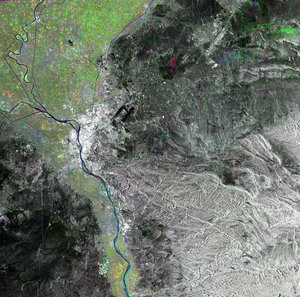Accept all cookies Accept only essential cookies See our Cookie Notice

About ESA
The European Space Agency (ESA) is Europe’s gateway to space. Its mission is to shape the development of Europe’s space capability and ensure that investment in space continues to deliver benefits to the citizens of Europe and the world.
Highlights
ESA - United space in Europe
This is ESA ESA facts Member States & Cooperating States Funding Director General Top management For Member State Delegations European vision European Space Policy ESA & EU Space Councils Responsibility & Sustainability Annual Report Calendar of meetings Corporate newsEstablishments & sites
ESA Headquarters ESA ESTEC ESA ESOC ESA ESRIN ESA EAC ESA ESAC Europe's Spaceport ESA ESEC ESA ECSAT Brussels Office Washington OfficeWorking with ESA
Business with ESA ESA Commercialisation Gateway Law at ESA Careers Cyber resilience at ESA IT at ESA Newsroom Partnerships Merchandising Licence Education Open Space Innovation Platform Integrity and Reporting Administrative Tribunal Health and SafetyMore about ESA
History ESA Historical Archives Exhibitions Publications Art & Culture ESA Merchandise Kids Diversity ESA Brand Centre ESA ChampionsLatest
Space in Member States
Find out more about space activities in our 23 Member States, and understand how ESA works together with their national agencies, institutions and organisations.
Science & Exploration
Exploring our Solar System and unlocking the secrets of the Universe
Go to topicAstronauts
Missions
Juice Euclid Webb Solar Orbiter BepiColombo Gaia ExoMars Cheops Exoplanet missions More missionsActivities
International Space Station Orion service module Gateway Concordia Caves & Pangaea BenefitsSpace Safety
Protecting life and infrastructure on Earth and in orbit
Go to topicAsteroids
Asteroids and Planetary Defence Asteroid danger explained Flyeye telescope: asteroid detection Hera mission: asteroid deflection Near-Earth Object Coordination CentreSpace junk
About space debris Space debris by the numbers Space Environment Report In space refuelling, refurbishing and removingSafety from space
Clean Space ecodesign Zero Debris Technologies Space for Earth Supporting Sustainable DevelopmentLatest
Applications
Using space to benefit citizens and meet future challenges on Earth
Go to topicObserving the Earth
Observing the Earth Future EO Copernicus Meteorology Space for our climate Satellite missionsCommercialisation
ESA Commercialisation Gateway Open Space Innovation Platform Business Incubation ESA Space SolutionsLatest
Enabling & Support
Making space accessible and developing the technologies for the future
Go to topicBuilding missions
Space Engineering and Technology Test centre Laboratories Concurrent Design Facility Preparing for the future Shaping the Future Discovery and Preparation Advanced Concepts TeamSpace transportation
Space Transportation Ariane Vega Space Rider Future space transportation Boost! Europe's Spaceport Launches from Europe's Spaceport from 2012Latest

Cairo, Egypt
Thank you for liking
You have already liked this page, you can only like it once!
This image from Sentinel-2A on 13 August features Cairo, in Egypt.
The capital of Egypt, Cairo is one of the largest cities in Africa. It has existed for over 1000 years on the same spot on the Nile River banks. Located in the northeastern part of the country, Cairo is the passage to the Nile delta.
The Nile River is the father of African rivers and the longest river in the world. With a length of some 6650 km, it rises south of the equator and flows northwards through northeastern Africa, draining into the Mediterranean Sea.
The river is the cause of the strong contrasts we see in the image. The river’s fertility allowed the Egyptians to thrive despite the arid surrounding desert. It has always delivered the necessary water to transform the desert into a lush garden, where produce such as tomatoes, potatoes, sugar cane, rice and even cotton are grown. The Nile Delta, in fact, ranks among the world’s most fertile farming areas.
The sharp borderline between green fields and the yellow–brown desert is clear. Notice how the area is greener on the west side – the terrain is flatter, so more easily irrigated than the higher terrain to the east.
The city of Cairo shows striking contrasts. Along the well-irrigated shoreline, the green reveals the thick vegetation, while the grey areas denote the dense city. In the older areas to the east, however, beneath the foothills of the Eastern Desert and the rocky Muqaṭṭam Hills, brown and ochre are the dominant colours.
The city continuously mixes ancient and new. The Pyramids of Giza, erected on a rocky plateau on the west bank of the Nile, stand at the southwestern edge of the city, while the world’s oldest surviving obelisk in the northeast marks the site of Heliopolis, a suburb of Cairo some 10 km from the city centre.
The 6th of October City, on the left side of the image, is a new city in the desert. It hosts students from various countries, as well as from Egypt, who study at its private universities.
Cairo’s various golf courses are also featured in this image, as well as the international airport, partly visible on the top right.
Sentinel2-A has been in orbit since 23 June, and is a multispectral high-resolution imaging mission for land monitoring, to provide imagery of vegetation, soil and water cover, inland waterways and coastal areas.
This image is also featured on the Earth from Space video programme.
-
CREDIT
Copernicus Sentinel data (2015)/ESA -
LICENCE
CC BY-SA 3.0 IGO or ESA Standard Licence
(content can be used under either licence)














 Germany
Germany
 Austria
Austria
 Belgium
Belgium
 Denmark
Denmark
 Spain
Spain
 Estonia
Estonia
 Finland
Finland
 France
France
 Greece
Greece
 Hungary
Hungary
 Ireland
Ireland
 Italy
Italy
 Luxembourg
Luxembourg
 Norway
Norway
 The Netherlands
The Netherlands
 Poland
Poland
 Portugal
Portugal
 Czechia
Czechia
 Romania
Romania
 United Kingdom
United Kingdom
 Slovenia
Slovenia
 Sweden
Sweden
 Switzerland
Switzerland



























